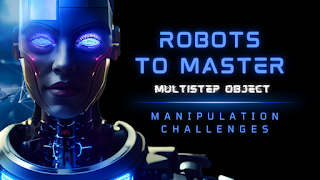MIT's Innovative Diffusion-CCSP Technique Empowers Robots to Master Multistep Object Manipulation Challenges
Researchers at MIT have developed a new technique called Diffusion-CCSP (Continuous Constraint Satisfaction Problem) that uses generative AI models to help robots solve complex object manipulation problems. This technique has been specifically applied to multistep robotic manipulation challenges, such as packing objects into a tight space or arranging bookshelves in a home.
The Challenge of Multistep Robotic Manipulation
Multistep robotic manipulation tasks, such as packing objects into a tight space, present a significant challenge for robots. These tasks involve a myriad of constraints, from geometric ones like preventing robot arm collisions with the environment, to physical constraints ensuring object stability, and qualitative directives such as spoon placement relative to a knife. The constraints are numerous, varying based on object geometries and human specifications.
The Diffusion-CCSP Technique
In Diffusion-CCSP, researchers at MIT have guided a series of generative AI models to collaboratively tackle multistep robotic manipulation challenges. This technique uses a collection of machine-learning models, each of which is trained to represent one specific type of constraint. These models are combined to generate global solutions to the manipulation problem, taking into account all constraints at once.
How Diffusion-CCSP Works
To solve a multistep robotic manipulation problem, the Diffusion-CCSP technique employs multiple diffusion models, each for a distinct constraint but sharing common knowledge like object geometries. Collaboratively, these models determine optimal placements for objects, ensuring a robotic gripper meets all constraints. The diffusion models are trained using data that captures the complex interplay of constraints, such as item positioning and specific placements in packing tasks.
Applications and Benefits
The Diffusion-CCSP technique has been successfully applied to various challenging issues, such as packing 3D objects with a robotic arm and stacking 2D objects. Due to its generalizability, this technique can be used to teach robots how to understand and meet the overall constraints of packing problems, such as the importance of avoiding collisions or a desire for one object to be next to another object. Robots trained in this way could be applied to a wide array of complex tasks in diverse environments, from order fulfillment in a warehouse to organizing a bookshelf in someone’s home.
Future Directions
The researchers at MIT are continuously working to enhance the capabilities of the Diffusion-CCSP technique. In the future, they plan to improve the physics-based models used in the training process, allowing robots to handle more dynamic motions and faster manipulation tasks. This ongoing research and development in the field of generative AI and robotic manipulation hold great promise for the future of automation and robotics in various industries.
